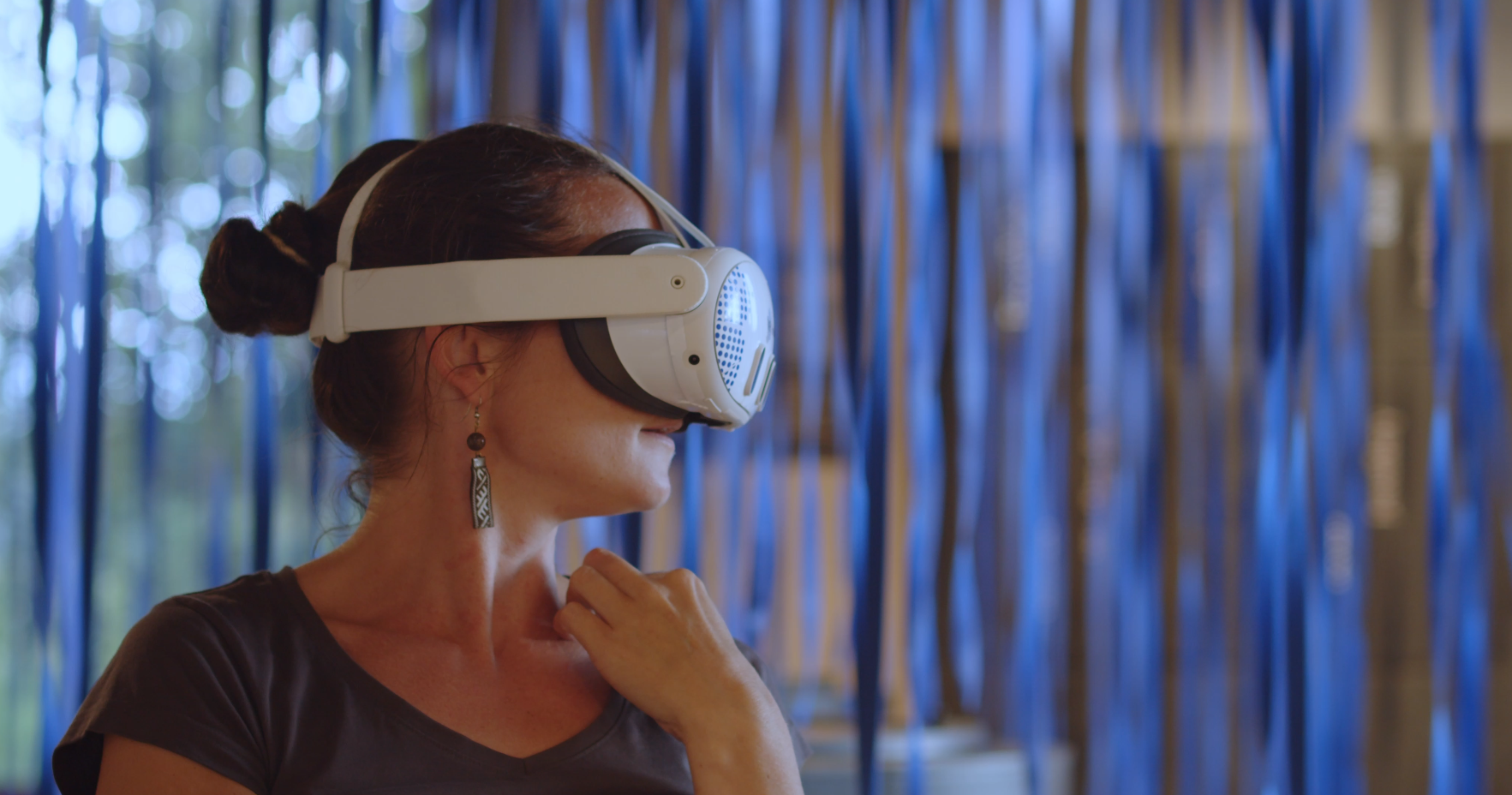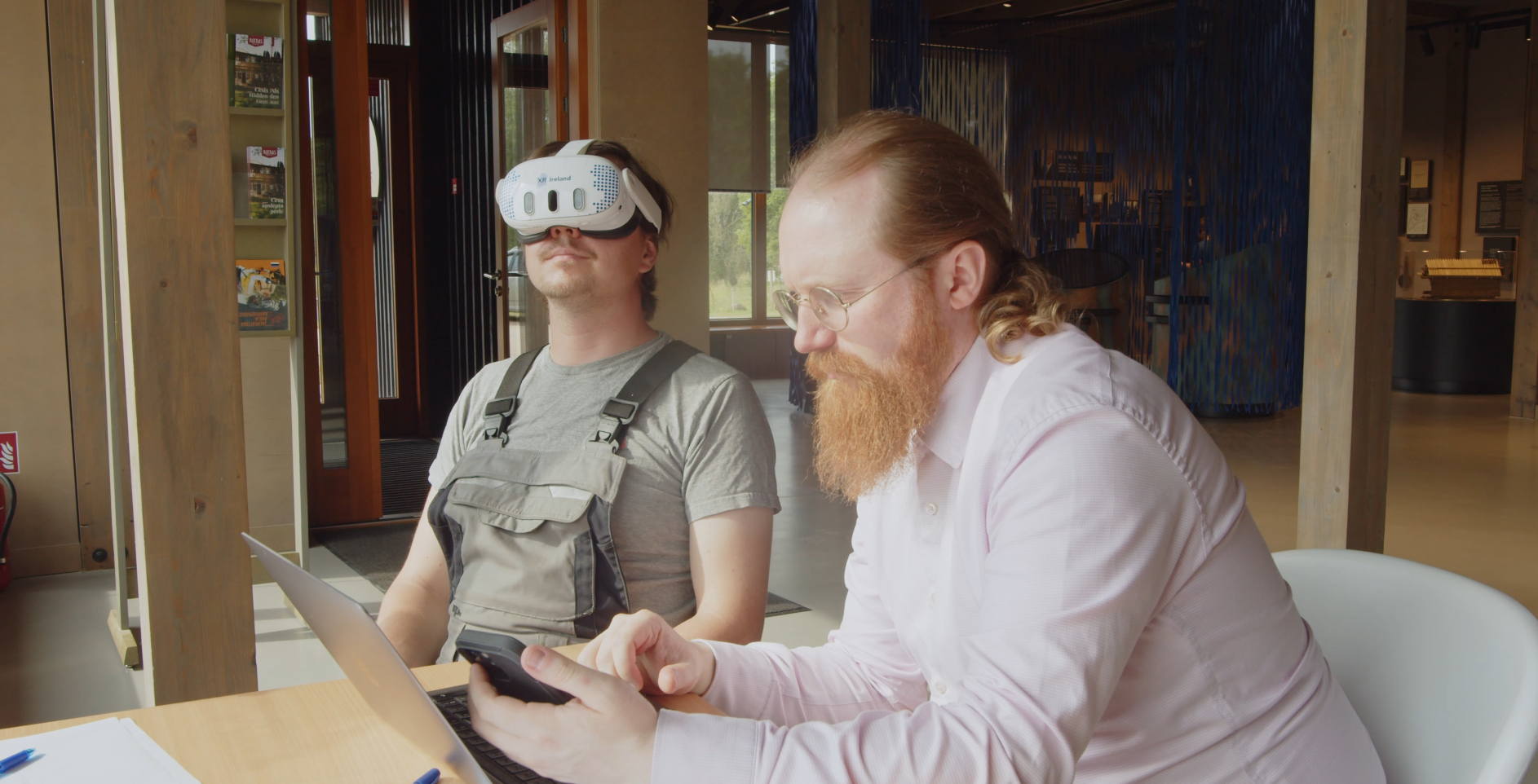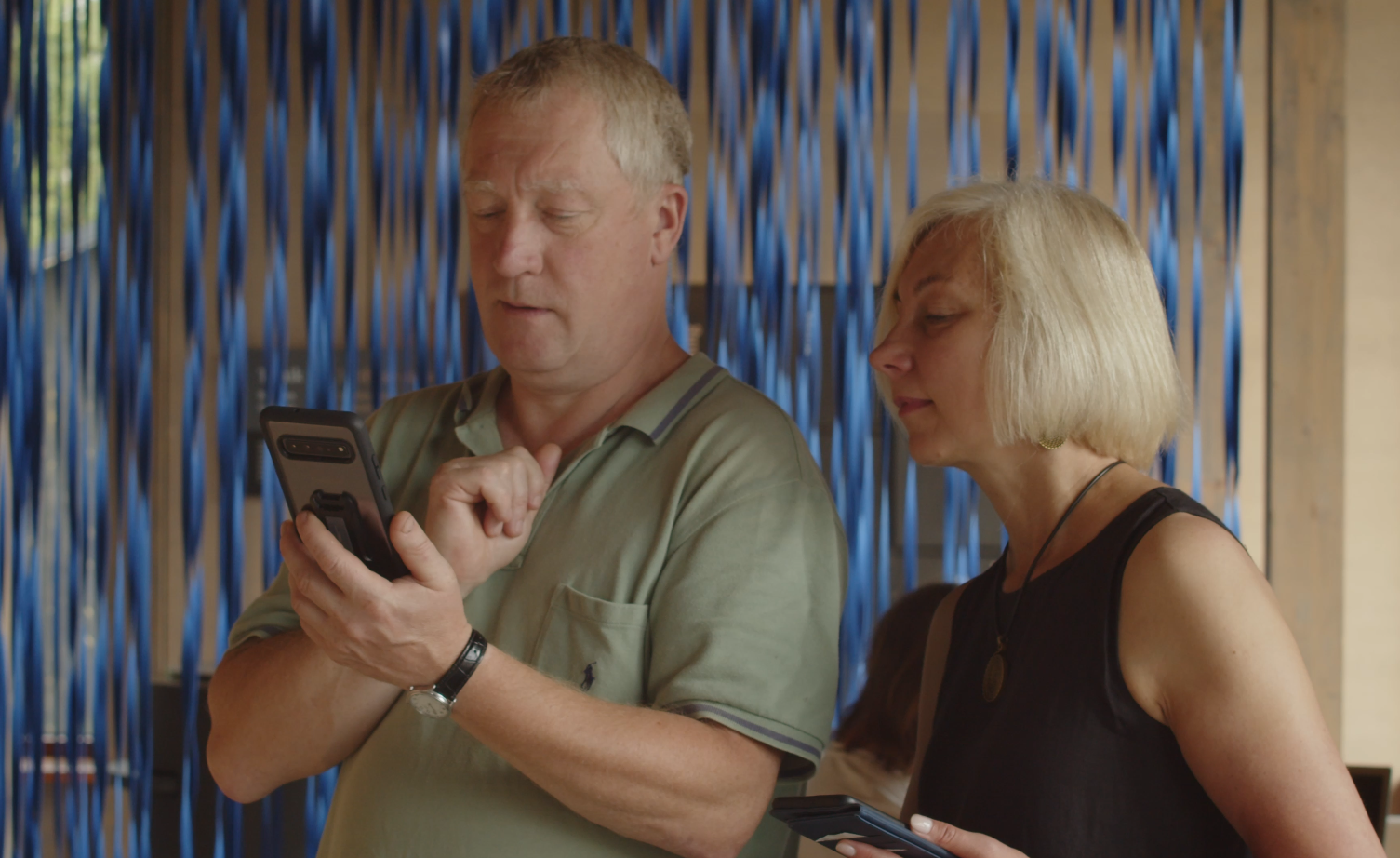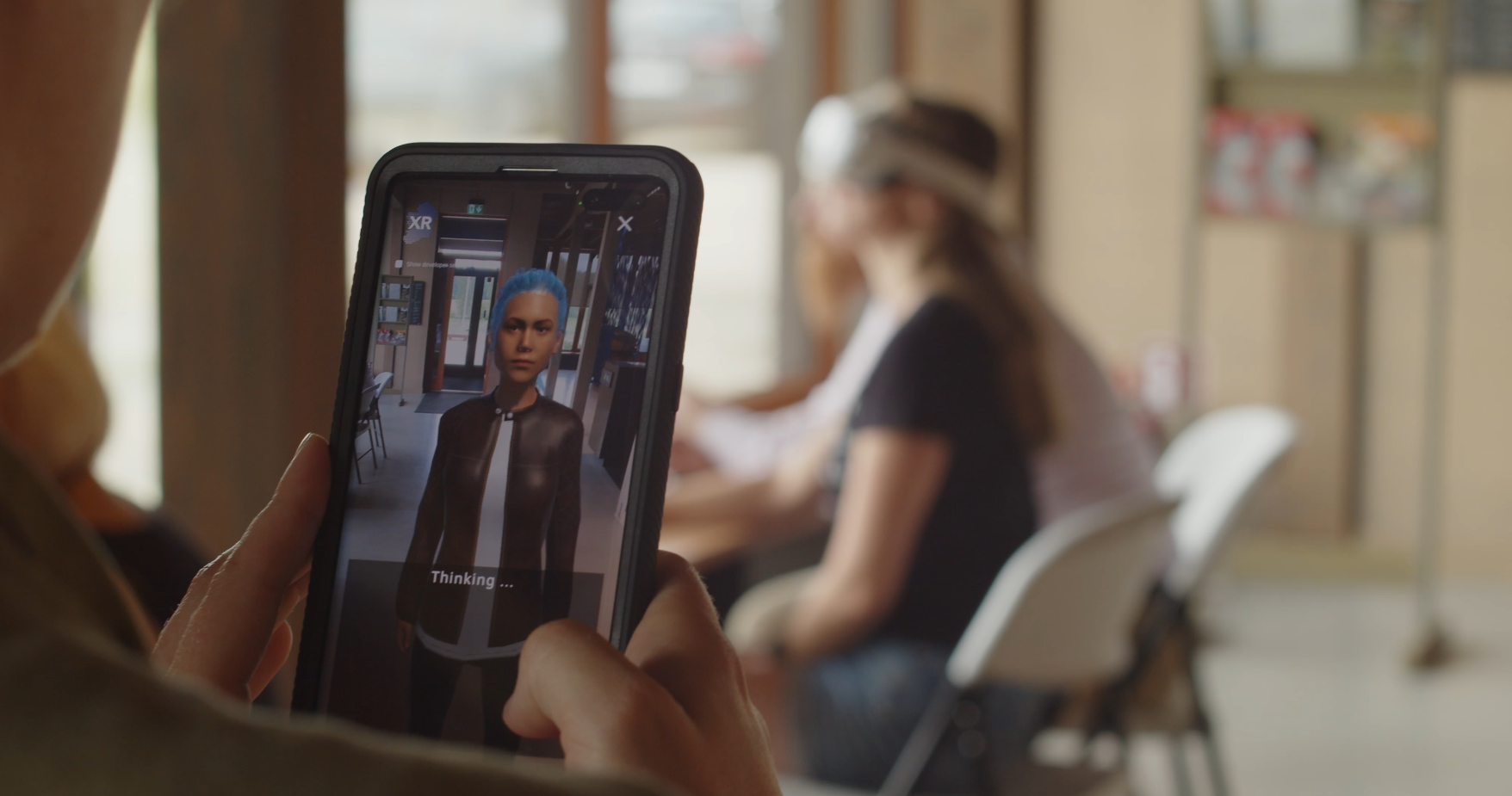The VAARHeT project, one of the winners of the VOXReality Open Call and a pioneering initiative in enhancing cultural heritage experiences through technology, recently conducted successful usability testing of three innovative solutions at the Āraiši Ezerpils Archaeological Park in Cēsis, Latvia. From July 14th to 16th, 2025, visitors had the opportunity to engage with XR applications, providing feedback that will shape the future of museum interaction.
Diverse Technologies for a Richer Experience
“The study consisted of a usability test and user experience study of three AI-assisted voice-driven interactive XR applications for open-air museum visitors”, explains Cordula Hansen, a representative from XR Ireland, one of the project partners. These included:
- VR Glasses for Storytelling: These immersive glasses transport visitors back in time, narrating and visually reconstructing the captivating history of the lake castle.
- AR Glasses for Visual Translation: A different type of wearable technology, these glasses offer real-time visual translation for diverse language groups within a single tour, fostering inclusivity.
- Mobile App Avatar for Practical Information: A friendly blue-haired avatar within a mobile application provides immediate answers to common visitor queries, such as opening hours and ticket prices.
Visitors at the Heart of the Innovation
The VAARHeT museum partner recruited 39 test participants, specifically targeting adults aged 25 to 55 with an interest in culture and museums, often visiting with children aged 3 to 12. This demographic aligns with the project’s design persona, ensuring feedback from the intended user base.
The primary objectives of involving these groups were multifaceted: to assess the overall usability of the applications, evaluate the added value of voice-driven XR experiences utilizing VOXReality’s NLP components and AI models, and identify areas for refinement with a view towards commercialization.

Overwhelming Positive Feedback for VR Storytelling
Initial data analysis, even while comprehensive processing is ongoing, reveals a clear favorite among the tested technologies: the virtual guide glasses.
David Toulon, an XR Ireland representative, shared, “Based on the feedback received so far, the virtual reality glasses are very popular. You can see and hear the story of how the castle was built. Visitor feedback suggests that the virtual reality glasses are here to stay.” [1]
This sentiment was echoed by test participants. Juris Beņķis, a visitor and former tourist guide, enthusiastically stated, “I’ve worked as a tourist guide, I know how hard it is to get children interested. I imagine that 20 children will come and put on these glasses, then it will be wow, they will be fascinated and will learn something.” [1]
The head of the archaeological park, Eva Koljera, highlighted the broader impact of the VR glasses, noting their utility beyond just engaging younger audiences: “People with mobility impairments who cannot physically get to the lake castle could get an idea of the castle here. Of course, young people and children also like it.” [1]
Cordula Hansen recounted how numerous visitors reacted with awe, with many exclaiming, “Wow, it really feels like you’re there!” Testers consistently praised the detailed graphical representations and the accurate explanations of how the historical houses were constructed. The novelty of voice interaction was also a popular feature, with one participant commenting, “I liked that there were no buttons to press.”


Continuous Improvement and Future Steps
The testing phase was also an opportunity for refinement. Before the main usability tests at Āraiši, preliminary performance tests were conducted in both lab settings and at the museum to ensure minimal latency and enable parallel testing of all three pilots.
One significant improvement was made to the Welcome Avatar, where the source material for the RAG component was re-curated to enhance the quality of responses. Cordula Hansen also noted an interesting user behavior: “due to the novelty of the voice interaction, first test users reported confusion when faced with the challenge of ‘speaking to the machine.’ We solved this through improved UX writing and adding some examples and tutorial prompts to the user flows to ‘practice’ with.”
Looking ahead, the project team has clear next steps. “After finalising the analysis of our test results, we will be able to determine which of the three VAARHeT pilots brings the most immediate value to the museum, and what type of interaction mechanics would be the most appropriate for that use case,” explained Cordula Hansen.
The plan is to further refine the most promising pilot experience and install it at the museum for an extended period, allowing for continuous feedback gathering in a real-world operational environment. Additionally, the voice-activation components trialed in these pilots will be further tested and integrated into an XR content management system platform specifically designed for the cultural heritage sector.
The VAARHeT project’s initial piloting has demonstrated the immense potential of XR technologies to create more engaging, accessible, and informative museum experiences. With the valuable feedback gathered, the future of cultural heritage interaction looks brighter and more immersive than ever!

[1] Part of the information in this article was sourced from the TV3.lv article “Virtuālais asistents, tulkošanas brilles un avatars: Āraišos notiek nākotnes muzeju izmēģinājumi” (Virtual assistant, translation glasses and avatar: future museums are being tested in Āraiši), available at https://tv3.lv/dzivesstils/celotprieks/virtualais-asistents-tulkosanas-brilles-un-avatars-araisos-notiek-nakotnes-muzeju-izmeginajumi/.
Photos courtesy of XR Ireland.

